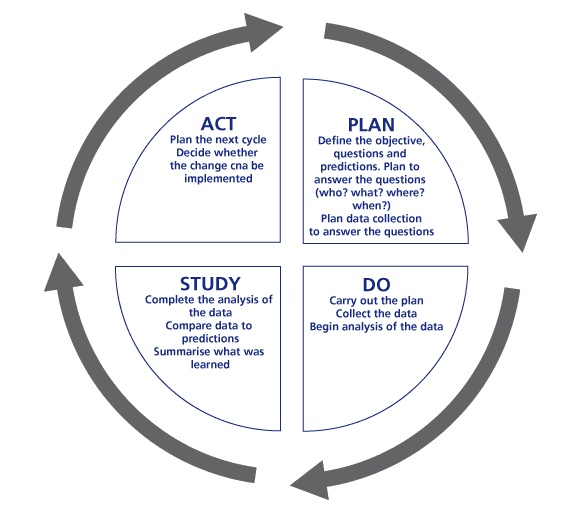|
July 2012
Improvement Cycles
People, organizations, and systems cannot know what to do at every step, because with each step forward, we learn things that inform the next step. It is impossible to predict the impact, or the consequence, of each step we will take.
Therefore, it is essential that we use a ‘trial and LEARNING” perspective, or Improvement Cycles, in our implementation work. Improvement Cycles are processes that assist in solving problems and improving practice. Each of the Improvement Cycles share a common framework, based on the PDSA, or Plan-Do-Study-Act Cycle (Deming, 1986; Shewhart, 1931).
PDSA Cycles
The PDSA improvement cycle, allows for rapid development and improvement of program components that happen frequently (e.g. classroom instruction occurs every day; coaching occurs every day for one staff person or another). In these cases, plans are clarified (Plan), carried out as intended (Do), the results are examined (Study), actions are taken to improve the plan (Act), and the process is repeated until exemplary outcomes are obtained (Cycle).

Usability Testing
Usability testing is an efficient and effective method for operationalizing a program and for establishing the necessary implementation supports in practice. The usability testing approach also allows for repeated use of PDSA Cycles to quickly adjust the program with each iteration so each step is testing a new and, hopefully, improved version.

Practice-Policy Feedback Loops
Practice-Policy Feedback Loops are another variation of the PDSA Cycle, carried out on a larger scale in a more complex environment. Feedback cycles from the practice level to the policy level allow for the educational system to engage in larger scale improvement processes. Connecting policy to practice is a key aspect of reducing systems barriers to high-fidelity implementation.

Transformation Zones
A Transformation Zone can be thought of as a vertical slice of the system from the classroom to the Capitol. Transformation Zones are used to simultaneously establish new ways of work, related both to the program and to the capacity to support the work, through an implementation infrastructure developed to ensure effective use of the intervention.
|